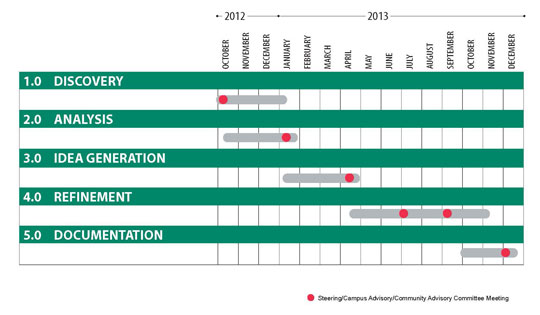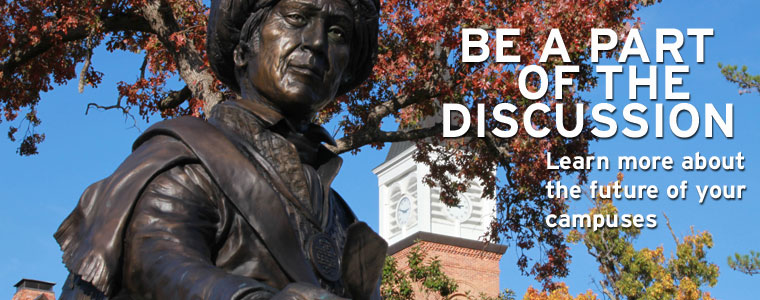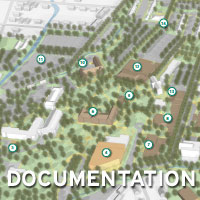The Process of the Master Plan
It's an exciting time to be a RiverHawk. Northeastern State University has embarked on development of a Campus Master Plan, the first in the university's history. The Master Plan will provide a long-range vision for the university, encompassing all three campuses -- Tahlequah, Broken Arrow and Muskogee. The goal is to provide a single, unified master plan for the university, while respecting the unique identity of each of its three access points. This is the beginning of a 16-month inclusive process that is comprised of five steps. The process is designed to encourage consensus building by providing numerous outreach opportunities for both campus and community constituents.
The five-step master planning process starts with a Discovery phase. It serves as an introduction to campus and an opportunity to establish goals for the future direction of the university. The second task is called Analysis and is used to further understand each campus by its systems (vehicular, pedestrian, building uses and natural features) and its space utilization. Once the information is gathered and accessed, three concept ideas are generated for the third phase of the project, Idea Generation. The intent is to derive a single preliminary Campus Master Plan from the best ideas presented in the three concepts. Step four, known as Refinement, provides time to review the master plan and make detailed adjustments. Task five documents the entire process into a report that will be used as a tool for addressing the physical, social, intellectual, and sustainability challenges NSU will face in the approaching decades. It is designed to provide a realistic roadmap for implementation of the recommendations.
The Master Plan will be a collection of powerful ideas -- a tool that will align the academic, spatial, fiscal and physical vision for the university. This opportunity based document will be driven by principles. It will identify short- and long-term strategies that will be visionary for the future of the campus, yet realistic. The Master Plan will provide a flexible framework for campus development. It will establish capital priorities and optimize resources and adjacent opportunities. Importantly, the Master Plan will be participatory and consensus based, implementable and defensible.







